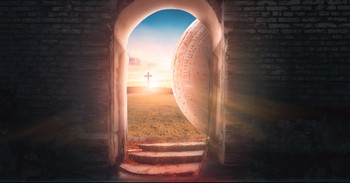Ten years ago, Jay Asher, a novelist specializing in Young Adult fiction, saw his novel about a high school student who commits suicide become what the New York Times called “a stealthy hit with surprising staying power.” The book eventually reached the top of the Times’ paperback best-seller list.
And ten years later, that novel, “Thirteen Reasons Why,” was turned into a Netflix series and is a cultural phenomenon.
If you’re a parent, chances are you’ve heard about the series. If you’re a parent in a place like Colorado Springs, where literally dozens of teenagers have committed suicide in recent years, you’re probably asking yourself whether the show will only make a bad situation worse.
I’m not certain about the answer to that question. What I am certain about is that it most certainly won’t help. As my colleague Gina Dalfonzo wrote in her superb article at BreakPoint.org, while the creators thought that they were striking a blow against teen suicide, “the limited and flawed worldview they brought to it meant that they were deeply, dangerously wrong.”
“13 Reasons Why” is set two weeks after a high school student named Hannah commits suicide. As Gina writes, “While her fellow students are still creating memorials and taking selfies in front of her locker, a bombshell drops on her friend Clay Jensen . . . A shoebox full of cassette recordings that Hannah created before her death is left with him—recordings addressed to 13 different people whom she says gave her reasons to kill herself.”
Told in a combination of “flashbacks and present-day stories,” Hannah’s tale is set in a depiction of the high school experience that, in Gina’s words, “makes ‘Lord of the Flies’ look like ‘Gilligan’s Island.’ Drugs and alcohol flow freely, bullying and sexual assault are facts of life, an innocent photograph or a few whispers can wreck a reputation, and the person who’s your best friend today could turn on you tomorrow.”
It’s an experience that leaves the viewer wondering “how anyone could survive.”
The answer seems to be “you can’t, unless you’re a sociopath.” Where does this leave non-sociopaths? Certainly not with hope. As Gina points out, nothing presented onscreen gives any reason to believe that the “poisonous atmosphere” can, much less will, get better.
Against this backdrop, Hannah’s carefully-orchestrated suicide-plus-audio-revenge seems like a viable option. In fact, and this is the key flaw of the series, she seems to wield a power in death that she never did in life.
Except, of course, she doesn’t. In real life, the kind of sociopaths and jerks who tormented her in life aren’t going to be too put out by an audio-cassette from the beyond. It’s cutting off your nose to spite your face times infinity.
The only person tormented is the one Hannah admired, Clay. And he’s left “haunted by the thought that Hannah died because he was ‘afraid to love her,’” an idea that owes more to the movies than to real-life. In any case, as Gina points out, neither Clay nor his classmates have any “concept of the kind of love that actually does save.”
As Gina correctly concludes, “Troubled kids need and deserve better.” The National Association of School Psychologists agrees, having issued the following statement: “We do not recommend that vulnerable youth, especially those who have any degree of suicidal ideation, watch this series. Its powerful storytelling may lead impressionable viewers to romanticize the choices made by the characters and/or develop revenge fantasies.”
Parents, we need to understand the impact that shows like this can have on our teens. And ultimately, we need to show our children what love really means—and where our hope in life truly lies.
BreakPoint is a Christian worldview ministry that seeks to build and resource a movement of Christians committed to living and defending Christian worldview in all areas of life. Begun by Chuck Colson in 1991 as a daily radio broadcast, BreakPoint provides a Christian perspective on today’s news and trends via radio, interactive media, and print. Today BreakPoint commentaries, co-hosted by Eric Metaxas and John Stonestreet, air daily on more than 1,200 outlets with an estimated weekly listening audience of eight million people. Feel free to contact us at BreakPoint.org where you can read and search answers to common questions.
John Stonestreet, the host of The Point, a daily national radio program, provides thought-provoking commentaries on current events and life issues from a biblical worldview. John holds degrees from Trinity Evangelical Divinity School (IL) and Bryan College (TN), and is the co-author of Making Sense of Your World: A Biblical Worldview.
Publication date: May 18, 2017



